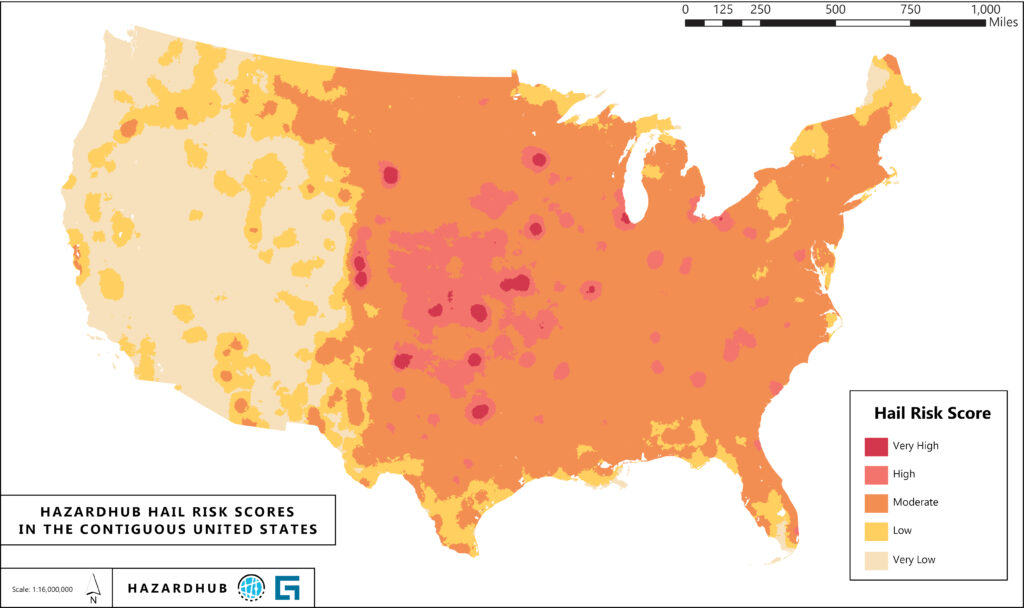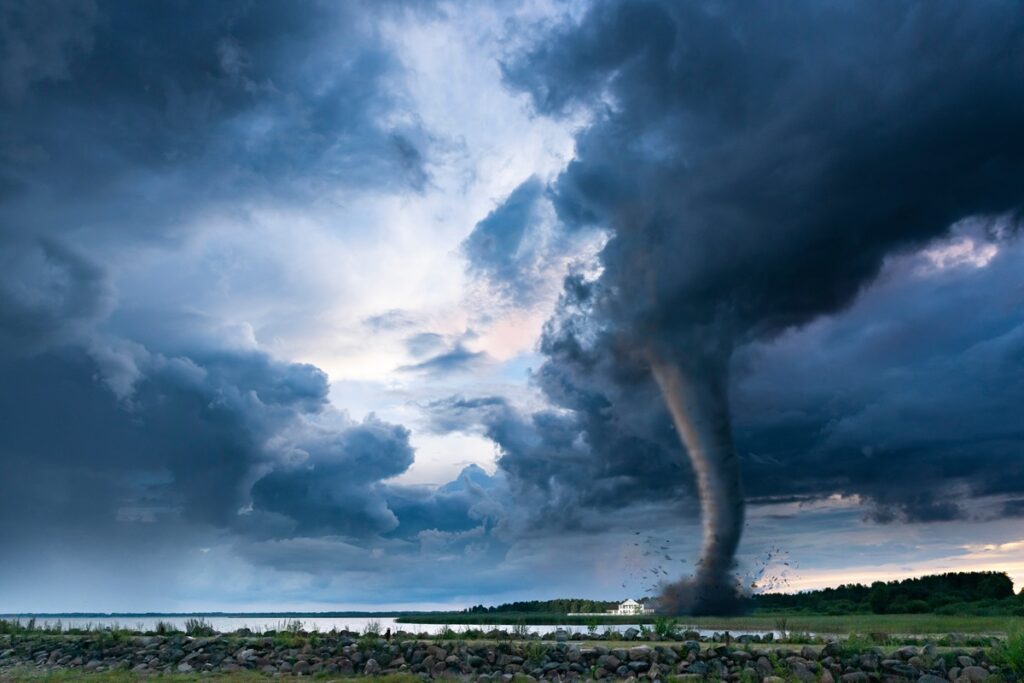Guidewire has released its updated spring weather and climate risk assessments to help insurers and homeowners better understand property vulnerabilities to tornadoes, hail, lightning, and flooding.
Each spring, particularly across the central and southeastern United States, a volatile mix of warm, moist air and cold, dry systems can quickly escalate into violent tornadoes, damaging hailstorms, and dangerous flooding. According to Guidewire HazardHub, these seasonal perils account for a growing share of property damage and insured losses nationwide.
What Is the Most Destructive Spring Threat?
Spring is the peak season for tornadoes, including the most violent events rated EF4 and EF5. According to the HazardHub Tornado Risk Score, approximately 4.8 million housing units in the U.S.—or 3.4% of all homes—are located in areas classified as high or very high risk for tornadoes.
HazardHub’s analysis of NOAA tornado data shows the U.S. experienced 1,796 tornadoes in 2024, the second-most active year on record, following 2004. Over the past 15 years, April, May, and June have consistently been the most active months for tornadoes, accounting for the highest total number and the most severe events (EF4 and EF5). According to HazardHub analysis:
- April: 4,180 tornadoes (monthly average), including 30 EF4 or EF5 tornadoes
- May: 4,244 tornadoes (monthly average), including 24 EF4 or EF5
- June: 2,900 tornadoes (monthly average), including 17 EF4 or EF5

The U.S. typically experiences more violent tornadoes than any other country, with the greatest concentration in the central region known as Tornado Alley. While traditionally defined as northern Texas, Oklahoma, and Kansas, this high-risk zone has expanded eastward in recent years to include much of the Southeast and Ohio Valley.
Top States for Tornadoes (2020–2024)
- Mississippi (115 per year)
- Texas (96 per year)
- Alabama (90 per year)
Tornadoes caused $1.37 billion in property damage nationwide in 2023. Their destructive power often results in severe infrastructure damage and long-term community disruption.
Severe Convective Storms (SCS) and Hail
According to Swiss Re, a global reinsurer offering insurance and risk management for large-scale events, in 2023, Severe Convective Storm (SCS) events led to a record $65 billion in insured losses—hail was the primary culprit.
HazardHub’s Enhanced Hail Risk Score reveals that 99.72% of U.S. housing units are located in areas with at least some hail risk, though less than 1% are in high-risk zones. Wind and hail are the top causes of homeowners insurance claims, with hail alone accounting for about 20% of all P&C insurer payouts.

What Is the Nation’s Most Costly Climate Risk?
According to FEMA and the U.S. Senate Joint Economic Committee, flooding remains the most costly natural disaster in the U.S. in terms of total economic impact. According to FEMA and HazardHub:
- 90% of all natural disasters involve flooding
- 75% of presidential disaster declarations are flood-related
- Only 4% of U.S. homeowners carry flood insurance—despite growing risk from extreme rainfall and outdated FEMA maps
HazardHub identifies Texas, Louisiana, and California as the states with the greatest riverine flood loss potential and New Jersey, New York, and Virginia as the most vulnerable to coastal flood impacts. In terms of total flood losses, Texas, New Jersey, and Louisiana rank the highest.
Escalating Risk
Spring weather events are becoming increasingly destructive. Gallagher Re notes that insured losses from Severe Convective Storms in the U.S. have grown at a 9.6% annual rate since 2000, driven by factors like suburban expansion and increased property exposure in high-risk areas.
“Spring no longer means just warmer weather—it signals the start of the most destructive season for homeowners,” said Tammy Nichols Schwartz, CPCU and Senior Director of Data and Analytics at Guidewire. “With HazardHub’s property-specific risk scores, insurers can better assess exposure, and policyholders can take proactive steps to protect their homes.”
Severe Convective Storms (SCS) can cause extensive property damage through wind, hail, lightning, heavy rainfall, and tornadoes. These events can also trigger secondary perils, such as mudslides—especially in wildfire burn areas—where subsequent storms pose heightened risks.
Common springtime losses include structural damage, fallen trees, shattered windows, power outages, water intrusion, and even mold or food spoilage, all of which may lead to additional living expenses. Seasonal increases in property transactions can also lead to more vacant homes, which are particularly vulnerable to undetected damage and often result in higher claims severity.
Click here for more on Guidewire’s analysis of spring storms.




